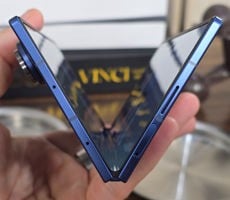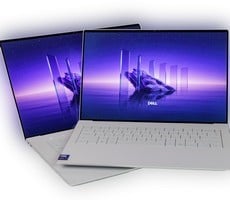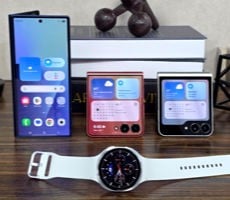Galaxy Z Fold7 Review: Samsung’s Stunning Folding Phone Revival
Galaxy Z Fold7 Reception And Sound Quality
Considering the Z Fold7’s ultra-thin design and minimal internal volume, we were pleasantly surprised by the quality of the stereo speakers, which sound loud and clear. Obviously, there’s no headphone jack here, but the Z Fold 7 supports aptX HD, LDAC, and enhanced SSC (Samsung’s newest proprietary codec) for high-quality wireless playback over Bluetooth, plus wired listening via USB Type-C (digital accessories only).Galaxy Z Fold7 Performance
As you’d expect, Samsung’s Galaxy Z Fold7 boasts Qualcomm’s flagship 3nm chip, the Snapdragon 8 Elite for Galaxy. Despite this phone’s slim form factor, this is the 8-core SoC with the faster clock speeds exclusive to Samsung, not the regular 8-core variant, or the 7-core version found in the Oppo Find N5. It’s paired with 12GB of RAM and 256GB or 512GB of UFS 4.0 storage, or 16GB of RAM and 1TB of storage for the top model. There’s no microSD support.Our review unit dropped to 45.4% of its initial score after 20 iterations in 3DMark’s Wild Life unlimited stress test. That’s among the lowest sustained performance we’ve ever recorded on this benchmark. We realize that this won’t matter to you (or most people, really) unless you’re a hard-core gamer pushing the Snapdragon 8 Elite to its limit, but it’s vexing to see this amount of thermal throttling in a phone that costs two thousand dollars. This is the price we pay for ultra-thin phone designs.
Galaxy Z Fold7 Geekbench Results
GeekBench is a cross-platform benchmark that simulates real-world processing workloads in image processing and particle physics calculation scenarios. We tested all of the smartphones featured here with GeekBench's single and multi-core workloads.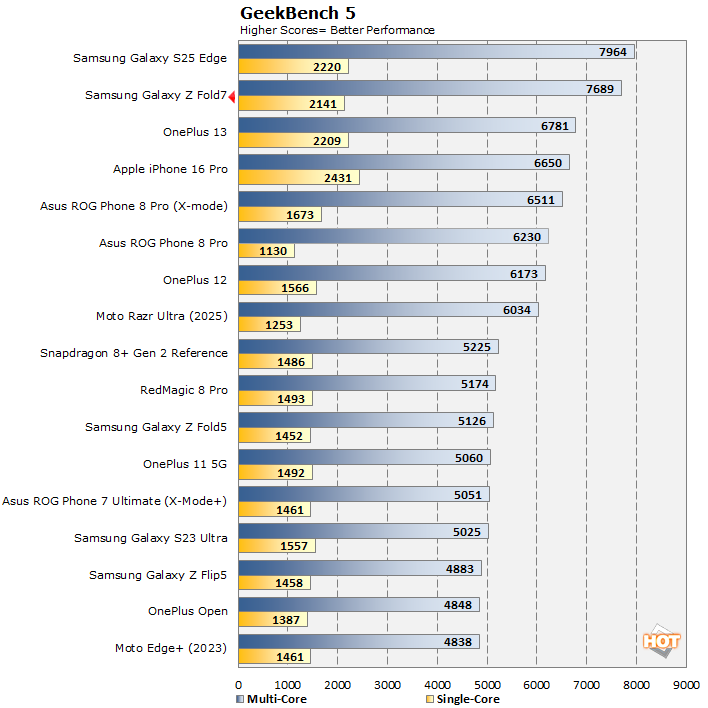

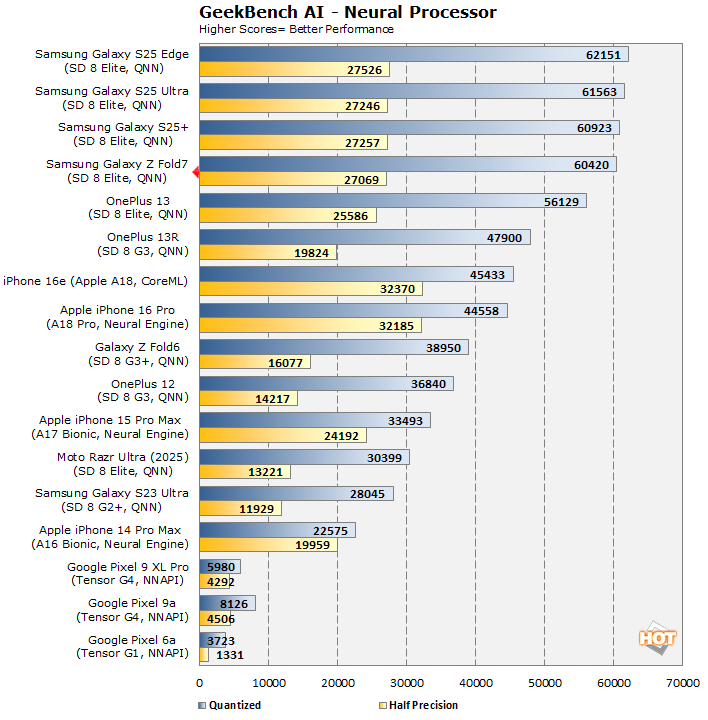
Galaxy Z Fold7 PCMark For Android Results
UL's PCMark for Android is an excellent suite of tests if you want to benchmark a wide range of tasks on a handset -- things like image and video editing, as well as lighter-duty, everyday workloads such as email and web browsing. When you see the test running live, it's clear the scripted application tests are carefully selected and tuned to make use of the mobile platform in a very controlled way.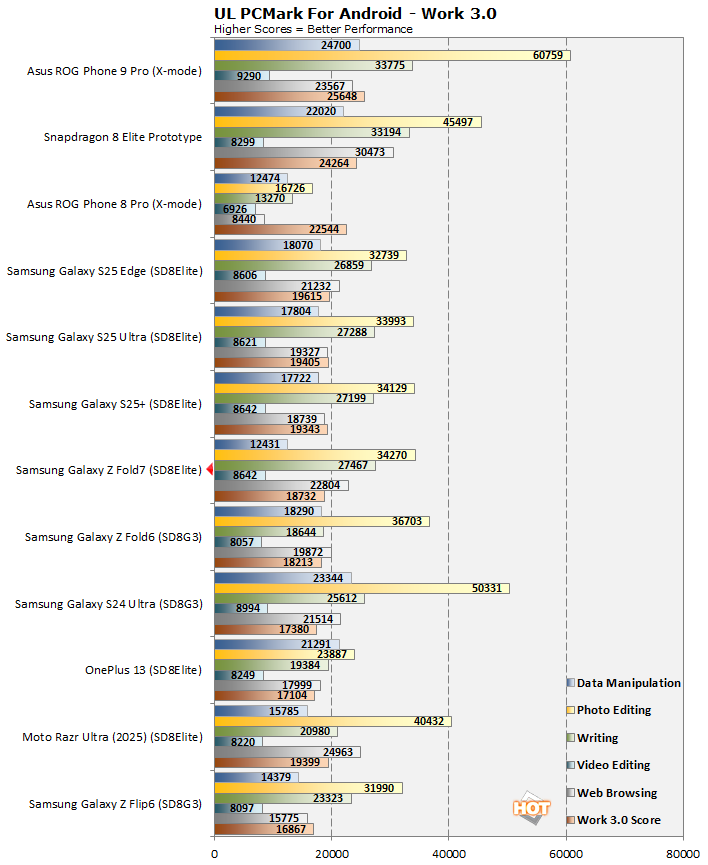
Galaxy Z Fold7 AnTuTu 8 Benchmarks
AnTuTu’s latest benchmark returns a number of metrics ranked with somewhat nebulous scores, rather than frame rates or time to complete. Here we're running the latest version of AnTuTu across multiple Android devices. AnTuTu returns four top level performance results which are all included here: CPU, RAM, 3D, UX (or User Experience), along with a total score.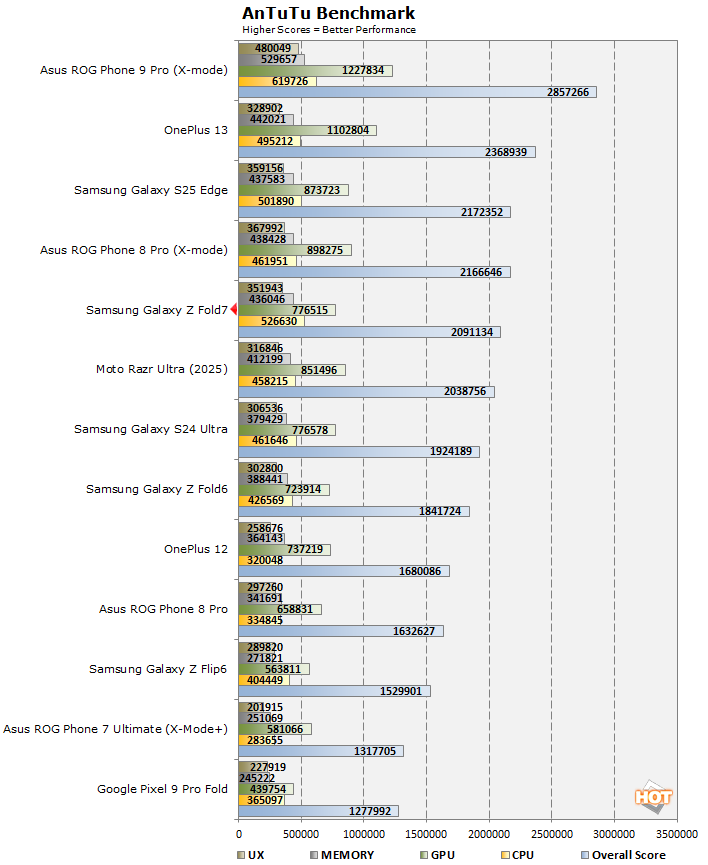
According to AnTuTu, the Z Fold7 offers an notable increase in performance vs. previous generation Android handsets, slotting below the Galaxy S25 Edge in terms of its overall score.
Galaxy Z Fold7 Graphics And Gaming Benchmarks Results
Now, let's take a look at how the Z Fold7 stacks up in GFXBench, which has been one of the standard mobile graphics/gaming performance benchmarks for years. To ensure that display refresh (v-sync) and resolution aren't limiting factors, we're comparing off-screen test results here. GFXBench tests OpenGL ES graphics workloads and we're specifically testing OpenGL ES 2.0 and 3.0, as well as Vulkan in the latest iterations.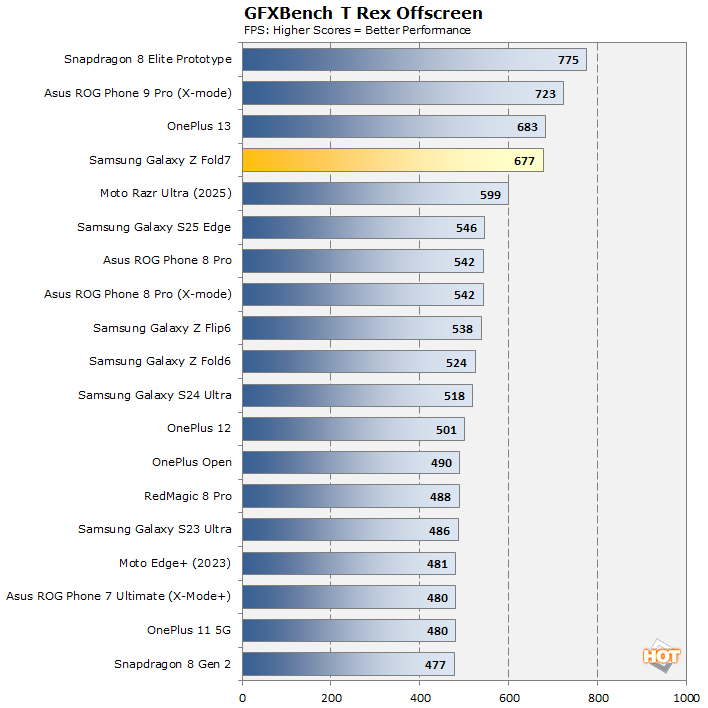
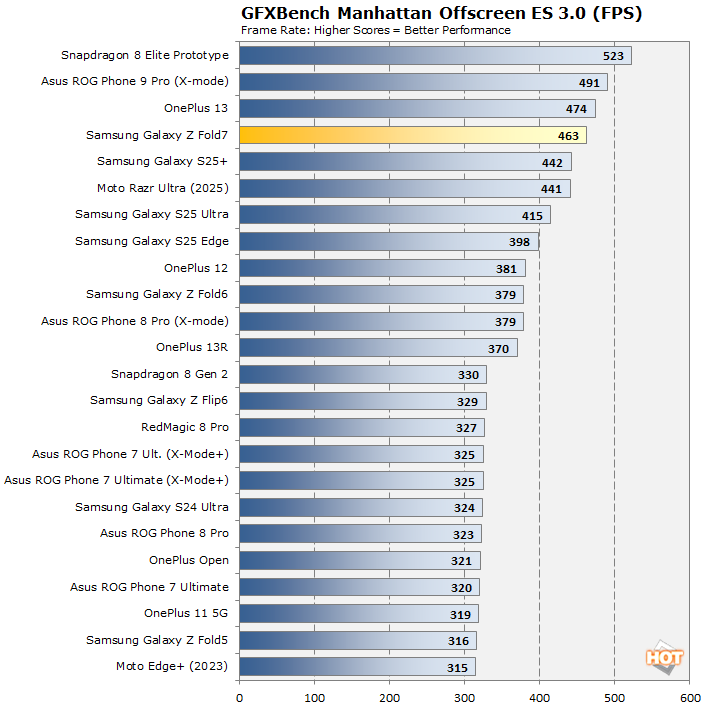
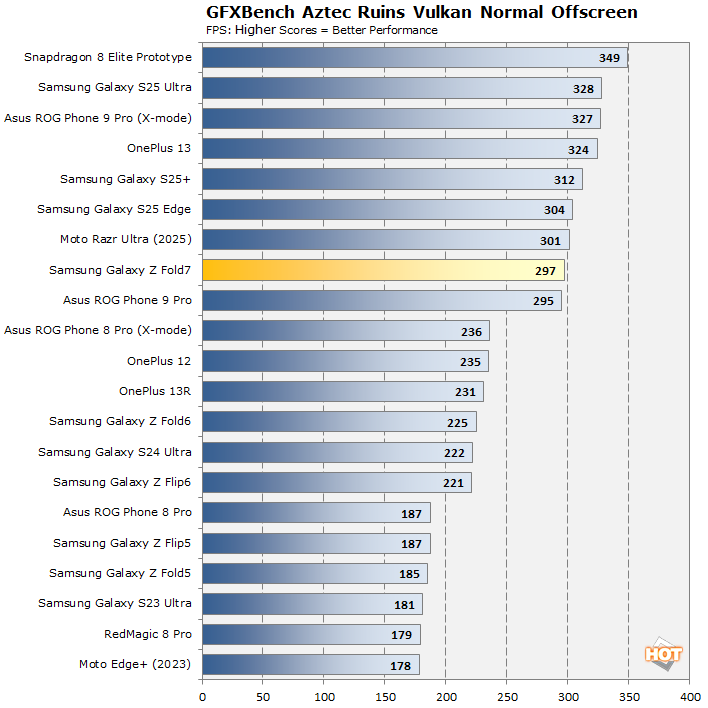
As usual, we're seeing great performance from Snapdragon 8 Elite-equipped devices like the Z Fold7. This phone delivers excellent scores in these graphically rich, gaming-oriented benchmarks.
Galaxy Z Fold7 3DMark Sling Shot Benchmark Tests
UL's 3DMark Sling Shot is a newer benchmark module that's been added to the 3DMark mobile suite. Unlike previous gen 3DMark mobile tests, Sling Shot is a much more advanced OpenGL ES 3.1 and Metal API-based benchmark that employs more advanced rendering techniques, like volumetric lighting, particle illumination, multiple render targets, instanced rendering, uniform buffers and transform feedback.
3DMark Sling Shot Extreme Benchmark
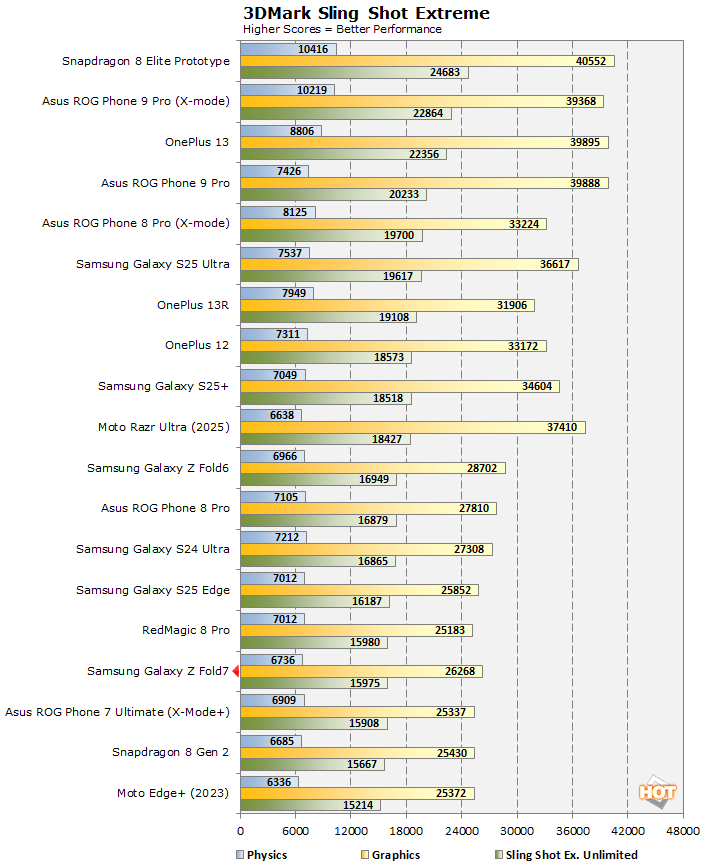
Z Fold7 3DMark Wild Life Benchmark Tests

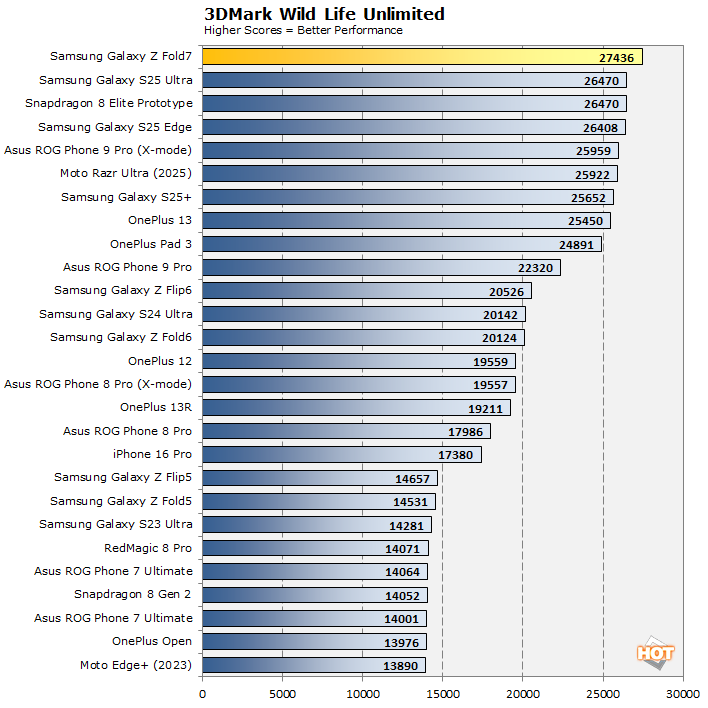
Galaxy Z Fold7 Additional Features And Battery Life
The remaining specs match other Snapdragon 8 Elite handsets. You’ll find sub-6GHz and mmWave 5G under the hood, alongside CAT 20 LTE, tri-band WiFi 7 (802.11be), Bluetooth 5.4 (LE), NFC, UWB, A-GPS / GLONASS, Galileo / BDS positioning, plus the standard array of sensors. The linear vibration motor delivers strong haptics, and the side-mounted capacitive fingerprint sensor is fast and reliable. So is face unlock.Unfortunately, the Z Fold7 retains the small 4,400mAh battery capacity and slow 25W (USB PD) wired charging speeds of the Z Fold6, Z Fold5, and Z Fold4. It also still lacks a charger in the box. Like before, the Z Fold7 features 15W (now Qi2-ready) wireless charging and 4.5W reverse wireless charging. By contrast, the Oppo Find N5 boasts a 5,600mAh silicon-carbon battery with 80W wired charging and 50W wireless charging.




